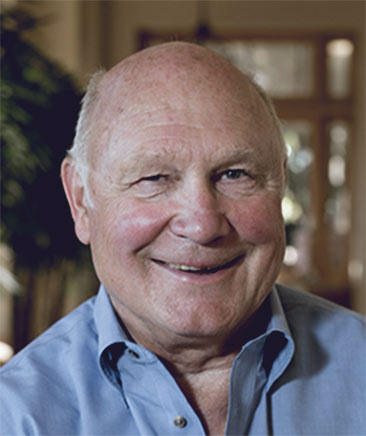This article was first published on Aug. 27, 2021 on the Harvard Business Review website.
Business customers increasingly control how they buy. They expect to engage with the companies they buy from through a coordinated blend of human and digital experiences and sales channels. It’s challenging for companies to create a fully-integrated experience. Especially when dealing with many prospects and customers (e.g., small and medium-sized businesses), it’s difficult for sellers to tailor solutions sufficiently to match each customer’s situation. And sellers often struggle to make the most of their sales engagements without access to marketing intelligence from digital interactions. A failure to customize and coordinate customer outreach leads to poor customer experiences, missed sales opportunities and wasted effort.
Initially in tech, and now across industries, companies are finding sellers can boost impact and reduce friction in this omnichannel world with a demand center.
Demand centers identify business opportunities through inbound marketing (e.g., personalized customer journeys with tailored content and experiences) and outbound marketing (e.g., paid media, events, webinars and emails to find customers). Demand centers prioritize and qualify leads and orchestrate customer outreach. Sometimes, the response is digital (e.g., the demand center generates an email with personalized content). Other times, the demand center provides guidance and content to help an inside or field salesperson follow up. Together, digital tools and humans adapt to connect with customers at the right moment in their buying cycle.
Microsoft was a pioneer in establishing a demand center. Corporate vice president Stephanie Ferguson, who led the transformation, explains, “Our demand center brings together all digital customer engagement in one global engine enabled by people with expertise in sales, marketing, data science and marketing operations supported by a modern marketing platform and data capabilities.”
The demand center has reciprocal benefits for Microsoft and its customers. “Customer engagement is more synchronized across channels allowing us to bring together signals from digital and in-person engagements to help us tailor the content and offers for each buying decision-maker,” Ferguson says. “For Microsoft, we now have data across all the geographies and channels customers interact with us which gives us the insight we need to optimize our experiences in ways that create the most value for customers.”
Once companies put a demand center in place, they generally find that lead conversion rates are higher, while lead generation costs are lower. Sales force capacity is better utilized and balanced with the inflow of leads. Ongoing performance monitoring enables timely diagnosis of issues and identification of improvement opportunities. The selling organization is nimbler as customers and markets evolve.
Intuit, the provider of financial software such as QuickBooks and TurboTax, is building a demand center to grow its business with midmarket companies. Caitlin Clark-Zigmond, who previously led segment marketing including demand generation for a large telecom company, joined Intuit to lead the effort. Intuit leads the market with smaller businesses that have single decision makers. But, as Clark-Zigmond explains, “Midmarket organizations have more complex needs and multiple people involved in purchasing. To bring solutions to these customers, we need a deeper understanding of how midmarket businesses buy, who is involved in buying decisions and what each decision maker needs.” Clark-Zigmond’s team is creating a central repository of content and campaigns for each customer persona (e.g., CEO, CFO) and buying stage, while developing the technology backbone and operations prowess the demand center needs. Within sales, Intuit is building these capabilities for both direct sales channels and indirect sales channels, i.e. partners to co-sell, sell-with and sell-through. She adds, “As a first step, we are cataloging assets we already have to contribute to this effort.”
As logical as a demand center sounds, it’s challenging to get a successful one up and running. Three related changes are required.
First, sales and marketing roles must evolve. Traditionally, marketing controls the early part of the sales funnel by generating leads; then sales takes over. With a demand center, customers routinely disrupt this sequence, for example, by going back to a “marketing-led” step (e.g., a webinar) after talking to an inside salesperson. The legacy marketing mindset of measuring success by activity (e.g., how many leads did a campaign generate?) must change to a mindset of measuring outcomes (e.g., how much revenue was generated?).
Second, the way that sales and marketing teams work is redefined. The old cadence of annual and quarterly sales planning followed by daily execution, gives way to a new rhythm. Demand center analytics guide sales activity, continuously reprioritizing work based on customer needs. Marketers too must change what they do. They no longer focus on outbound campaigns for customer segments and products. Instead, marketers identify types of decision makers, create content, develop algorithms and decide which channels to use for outbound and inbound customer engagement.
Third, digital channels play a larger role, both in engaging with self-directed buyers and in supporting salespeople. The challenge for marketing becomes ensuring that the channels are ready with what customers and salespeople need, when they need it.
Because these changes significantly affect organizational structures, work processes and mindsets, implementing them can be difficult. Early in Microsoft’s journey, the sales team calling on nurtured leads resided in the marketing organization; it was moved to the sales organization. Ferguson reports: “It was the right decision for our customers and Microsoft to evolve our model and professionalize our sellers and align them with a true sales organization. Today that sales team is one of our closest partnerships.”
Intuit is adapting its successful small business marketing outreach and sales centers for the midmarket segment, but that does not make this journey any easier. Clark-Zigmond observes, “The demand center must leverage Intuit’s current strengths, while finding ways to reach multiple decisionmakers through numerous channels that work together to serve customers.” Because many data sources and channels must come together, demand centers are rarely well-oiled machines from the start. The best approach is to begin and to plan to iron out problems as experience grows.
As a demand center evolves, opportunities to add value do too. Microsoft added artificial intelligence (AI) capabilities to its demand center for scoring leads and making next-best-action suggestions for salespeople. The suggestions help salespeople have more meaningful conversations with customers. According to Ferguson, “Data about who within an account is engaged, with what content and with what level of intensity, give us a deeper understanding of what buyers want and how we can add value. We use data from every digital interaction to feed AI models that enable us to personalize each customer’s journey while dynamically weighting interactions to determine when each customer is ready to have a buying conversation. At that moment, we deliver recommendations to sellers with context that includes all the digital interactions individuals in a given account have had with Microsoft.” Stephanie concludes, “As we evolve the Microsoft demand center, we discover new opportunities to accelerate the speed and impact of our go-to-market motions to drive growth for our commercial businesses.”
There is risk for B2B companies that choose to wait to create a demand center. The digital sophistication of buyers is growing quickly, as are their expectations of a seamless buying experience. These evolving buyer needs will inevitably collide with a company’s fragmented personal and digital sales resources scattered across marketing, sales and partner digital agencies. Creating a demand center will only get harder. The promise of a demand center is great, and the difficulties in the journey can be overcome. Like most transformations requiring significant changes to roles and power dynamics, and involving fast-changing digital platforms, success begins with an experienced transformation leader and a multi-disciplined team. By delivering early successes through experimentation-driven learning, the team builds momentum and confidence toward a clear vision.
Add insights to your inbox
We’ll send you content you’ll want to read – and put to use.


















